Diabetes is the No. 1 cause of kidney disease in Hawaii, primarily because of poor diets and lack of exercise. A disproportionate number of Native Hawaiians and Pacific Islanders are affected by the disease.
It is not surprising that Hawaii has the one of the highest rates of diabetic kidney failure in the nation. Nationally, 45 percent of kidney failure is a result of diabetes. Hawaii exceeds this: 63 percent of kidney failure in Hawaii is attributed to the disease, according to recent studies.
The disease affects nearly one in seven adults in America, and according to the latest research, CKD-related deaths have doubled in the past two decades.
The trend is troubling and the future also looks bleak for the nation. The number of adults older than 30 years with kidney disease is projected to reach 28 million in 2020, and nearly 38 million in 2030, according to a national study.
What is Chronic Kidney Disease?
The two main causes of chronic kidney disease are diabetes and high blood pressure, which are responsible for up to two-thirds of the cases. Diabetes occurs when your blood sugar is too high, causing damage to many organs in your body, including the kidneys and heart, as well as blood vessels, nerves and eyes.
Chronic kidney disease damages kidneys. Wastes build to high levels in the blood and make people sick. Complications include high blood pressure, anemia (low blood count), weak bones, poor nutritional health and nerve damage. Kidney disease also increases the risk of heart and blood vessel disease.
Kidney disease can go on for years without being diagnosed. There may not be any symptoms, but the disease can progress to kidney failure, eventually requiring dialysis or a kidney transplant to live.
Hawaii: A Dialysis Capital
Hawaii has the dubious distinction of being one of the top 10 states in the nation for new dialysis patients. Nephrologists, or kidney specialists, estimate there is an average of one new person that starts dialysis each day in Hawaii.
Spaces once occupied by retail stores are being replaced by dialysis centers at an alarming rate. At last count, there are 25 renal dialysis centers in the state, 18 of which have opened within the past decade. These dialysis centers operate three shifts a day to meet the needs of the community.
While kidney transplants can be a solution, hundreds of people are on the waiting list, and more than 90 percent of these are for kidneys transplants.
In addition to the toll on people’s health, the disease can wreak havoc on wallets. Most patients typically need treatment three times a week, with copayments that can run as high as $1,000 per treatment. In 2010, the cost to Medicare for treatment of early and end-stage renal disease totaled more than $80 million nationally, according to the study in the American Journal of Kidney Diseases.
Sharing His Expertise to Benefit the Islands
Dr. Kevin Bennett, Associate Professor of Biology at the University of Hawaii-Mānoa, is breaking new ground. He is inventing new ways to detect the disease at an early stage, and his work will have an immediate, positive impact for Hawaii.
“Hawaii has a large population at risk for or are suffering from chronic kidney disease, with a significant fraction of the population on dialysis or awaiting transplant. Because we are such a small community, addressing the problem here can have a very direct impact very quickly,” Dr. Bennett said.
He relocated from Arizona State University and accepted a position at the UH-Mānoa with the promise of equipment that would help further his research.
“It was really the interesting research opportunities at UH that attracted me to Hawaii,” Dr. Bennett said. “First was the opportunity to work on a problem that is critical to this state population. Second, I was asked and funded to develop the first preclinical magnetic resonance imaging (MRI) center in the state, which is an opportunity to support other scientists at UH. There are many faculty working on important problems in fields like ecology, marine biology, environmental sciences, cancer research, neuroscience, physiology, materials sciences, and others. Just in my own department of Biology, for example, our faculty work on critically important issues in a wide range of fields, and we all also teach students at the undergraduate and graduate level. It’s an exciting place to be for faculty and students.“
Breakthrough Research in Early Detection
Blood and urine tests, and working with a primary care physician to promote healthier lifestyles are important intervention steps to help monitor and manage the disease. Dr. Bennett is finding new ways to aid in early detection through state-of-the-art imaging.
From his lab in the Biomedical Sciences Building on the UH-Mānoa campus, Dr. Bennett is taking early detection to an entirely new level. By looking at changes in tissues at a molecular or cellular level, he is making new discoveries that potentially will change way medicine is practiced.
“My lab develops new technologies to aid in early detection of a range of diseases. We try to add precision to medical diagnostics through imaging. We have recently been heavily focused on early detection of risk of both cardiovascular and renal disease,” he said. “In particular, we have been trying to find ways to help patients who don’t know they have chronic kidney disease, patients who have kidney disease, or patients waiting for kidney transplants. These individuals include patients with diabetes or hypertension, or premature infants. We develop tools for doctors to detect these diseases early so they can be more effectively managed.”
Collaborating with Experts in Other States
Dr. Bennett is facilitating collaboration across the country. While he concentrates on technology and biophysical issues, Dr. Jennifer Charlton of the University of Virginia provides the clinical perspective and insight as a pediatric nephrologist and Dr. Teresa Wu of Arizona State University, an engineer, focuses on image analysis and algorithm development.
“We design and build new things, and along the way we make discoveries. The new technology allows us to ask new scientific questions. My long-term goal is to locate individual molecules and cells inside the living human, but there are a lot of new things that have to be done to make that happen,” Dr. Bennett said. “Right now, as an example, we have made some new magnetic contrast agents that let us see microscopic changes in tissue structure in the kidney using MRI.”
The Benefits of MRI: “Virtual Hisotopathology”
“MRI is a fantastic tool because it is inherently three dimensional, does not use any ionizing radiation like x-rays, and can give you a nice view of soft tissue, bone, and pretty much anything else,” Dr. Bennett said. “We work on increasing the sensitivity of MRI to let us do something that we’re calling ‘virtual histopathology,’ which provides full, three-dimensional microscopic analysis of the tissue without having to cut anything. Making this work is a real partnership between our different labs. Our field is generally called ‘molecular imaging,’ because we try to detect individual molecules or cells in tissue with very high specificity.”
Turning Research into Clinical Applications
“Through this new technique, we are starting to ask about the link between hypertension and kidney damage, something that has been poorly understood. This line of research has led to many other questions, which my collaborators and I will pursue in time. We are also working on a standalone transplant evaluation system, trying to better match transplant organs to recipients and actually get our technology into the clinic to help patients.”
Attracting Out-of-State Funding
This valuable work been continuously funded by extramural grants since 2009. Dr. Bennett’s team has received grants from the Army Research Office, American Heart Association, the Hawaii Community Foundation, and the National Institutes of Health.
He currently has two round-one projects funded by the National Institutes of Health totaling nearly $3 million, roughly half of which goes to UH-Mānoa. He is now planning to submit a proposal for additional funding for a fast-track tech-transfer grant from the National Institutes of Health among other grant proposals.
Knowledge Transfer to Next-Generation Researchers
In addition to the benefits Hawaii derives from the research, many have the opportunity to work alongside Dr. Bennett. He currently collaborates with about 20 other people working on these projects, including faculty, technicians, PhD students, and undergraduates. The research project will eventually need to hire a manager and a technologist to run the MRI center once it is fully operational.
Dr. Bennett is a giving person, and finds it professionally rewarding to share his knowledge with his students.
“I’m currently hiring several new graduate students at UH-Mānoa. I really enjoy mentoring PhD students so that’s my focus. My current graduate student in particular, Edwin Baldelomar, has been a real creative force in our work. In fact, none of this work would have been possible without students partnering with us to push them forward. The students at UH-Mānoa have incredible potential. It’s always exciting to see them grow into professionals.”



